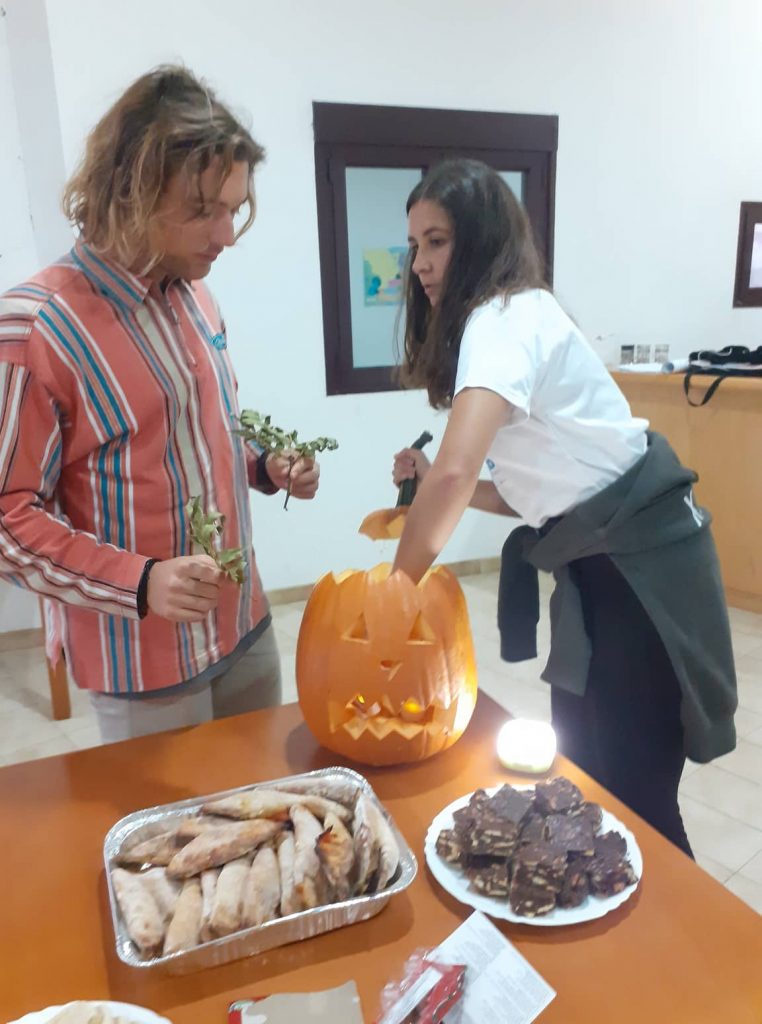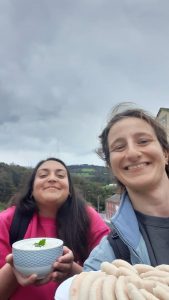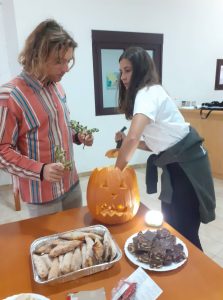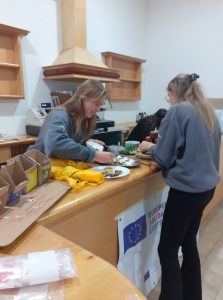
Pasando una tarde intercultural en O Cadavo
ESP:
El último viernes del proyecto los dos equipos de Lugo y de Baleira nos unimos. Cocinamos comida de los nuestros países. Y fuimos a O Cadavo. Teníamos la oportunidad, aparte de probar estos platos deliciosos, de aprender sobre costumbres gallegas.

Aprendimos por ejemplo que Halloween tiene sus raíces en la cultura céltica, en la celebración de Samaín y que en los siglos XVIII – XIX se transfirió a Estados Unidos a causa de los inmigrantes. Una celebración que tenía que ver con el fin del verano, y el volver de las almas de los difuntos en la tierra. Se consideraba un día que era fácil transitar entre dos mundos. La gente tenía miedo en las aldeas y se cerraban las casas a cal y canto. Podría que los visitará una hada, y eso se consideraba buena suerte para todo el año, pero también era posible que los visitará un trasgo y eso solo les traería mala suerte. Muchos también se disfrazaban para despistar a los espíritus malos. Y para darles miedo tenían la costumbre de vaciar las calabazas, esculpir calaveras, y poner velas en ellas.

Hablamos, también, sobre costumbres parecidas en nuestros países. Y tuvimos la oportunidad de aprender y sentir más la tradición gallega viendo el ritual de Queimada.
………………………. …………………………. ………………………… ……………………… …………………….. …………………. ………
ENG:
The last Friday of the project, the two teams of Lugo and Baleira were joined. We cooked food from our countries. And we went to O Cadavo. We had the opportunity, apart from trying these delicious dishes, to learn about Galician customs.

We learned, for example, that Halloween has its roots in the Celtic culture, in the celebration of Samaín and that in the 18th – 19th centuries it was transferred to the United States because of immigrants. A celebration that had to do with the end of summer, and the return of the souls of the deceased on earth. It was considered a day that it was easy to transit between two worlds. The people were afraid in the villages and the houses were closed up. They could be visited by a fairy, and that was considered good luck for the whole year, but it was also possible that a goblin would visit, and that would only bring them bad news. Many also dressed up to mislead evil spirits. And to scare them, they used to empty the gourds, carve skulls, and put candles in them.
We also talked about similar customs in our countries. And we had the opportunity to learn and feel more about the Galician tradition by watching the Queimada ritual.
- Volunteer
- Primitive Way


